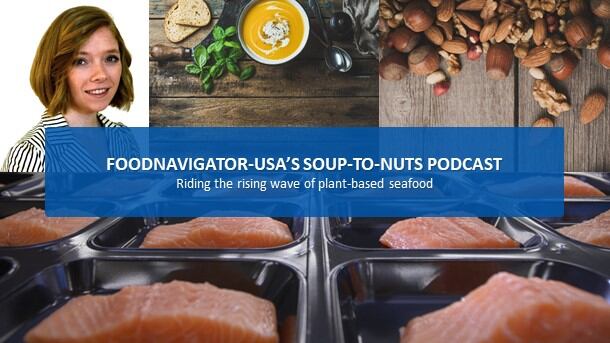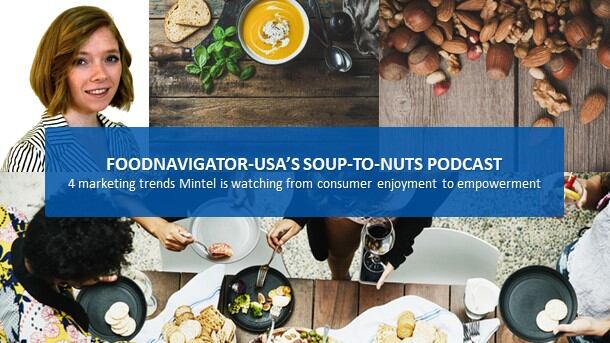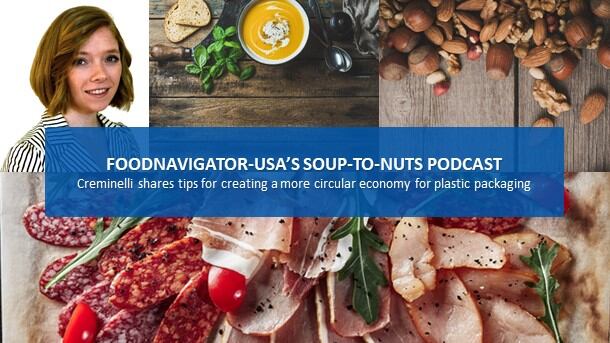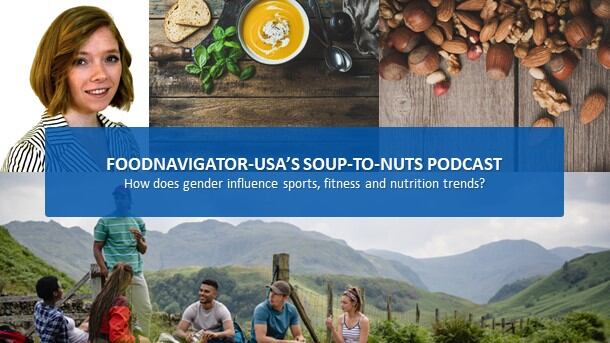According to SPINS data collated for the PBFA and the GFI, the US plant-based seafood market may be pretty small, compared to traditional seafood sales, which are upwards of tens of billions of dollars, with retail sales of $13.9m in 2021, but it is growing fast (+14%).
Globally, the segment is predicted to grow even faster with a recent report from Fact MR projecting a 28% compound annual growth rate from 2021 through 2031 to eventually represent a $1.3bn industry.
This growth is attracting significant investment, upwards of $70m in the first half of 2021, which is equal to the past two years combined, which in turn is propelling innovation that ranges mimicking seafood flavors, textures and appearance with whole vegetables to proprietary technologies that also are layering in desirable nutritional qualities.
In this episode of FoodNavigator-USA’s Soup-To-Nuts podcast, category experts and players gathered at Natural Products Expo West in Anaheim earlier this month discuss the full potential of plant-based seafood, what is driving consumer – and investor – interest in the segment, and what challenges innovators will need to address to drive trial and repeat purchase.
[Editor’s note: Never miss FoodNavigator-USA’s Soup-To-Nuts podcast – subscribe today.]
Alternative seafood is small but mighty
While the plant-based seafood industry currently is lagging behind the meat alternative category in terms of size, sales and variety of options, Ashley Kindle, the category manager for savory and plant-based meats and cheese at Givaudan Flavors, predicts it will grow much faster than meat and chicken alternatives in part because they have blazed a trail and done some of the heavy lifting around consumer education and creating demand.
“In the plant-based seafood space, we’re going to see a rapid rise, just as we did in the plant-based meat space. Consumers really want a lot of variety of species. They want a variety of applications. They want a variety of dishes as well. So, we’re gong to see the trend line that was in plant-based meat [accelerate] for plant-based seafood,” she said.
For support, she noted, 81% of consumers have tried plant-based seafood in the past year, which is higher than previous years, and 44% of consumers who tried it say they like or love it.
“There’s really an opportunity here for the space for plant-based seafood,” she said.
Focus first on ethics
Kindle noted that many of the drivers for consumer interest in plant-based seafood are the same as for beef, pork and poultry alternatives, but they may be more heavily weighted towards ethical and environmental concerns, which will slightly alter the marketing roadmap.
“We see that ethical concerns, environmental concerns are really those top concerns. So, thigs like overfishing our oceans, pollution of our streams and our oceans and our waterways. And then climate change and the energy that it really takes to over-fish …. So, all of those things really play a large part in this plant-base seafood acceleration,” Kindle said.
With that in mind, she recommends companies leverage environmental messaging in their branding and marketing.
Health and wellness concerns are a secondary driver, with focus on allergies, mercury levels and the rising contamination of microplastic in our oceans. In addition, Kindle said, consumers want to see plant-based options that deliver on nutrition – including high protein and healthy fats, for which seafood is well-known.
Good Catch offers broad line-up that checks all the boxes
As an early mover in the plant-based seafood segment, Gathered Foods strives to check each of these boxes with vegan fish brand Good Catch, which CEO Christine Mei explains was founded with a mission to raise consciousness, reduce harm and preserve the environment, while simultaneously delivering a great culinary experience.
While the company is mission-based, Mei says Good Catch also has an obligation as a category pioneer to deliver on taste, experience and nutrition so that consumers who are new to the segment will keep coming back.
“We prize that privilege to be on the leading edge,” and take seriously three key components to engaging with consumers and keep them coming back, including texture, taste and functional nutrition, she said.
One way Good Catch is able to deliver across all three of these requirements is with its proprietary six legume blend of peas, chickpeas, lentils, soy, fava beans and navy beans, which combined create a light, flaky texture and offer a hefty dose of plant-based protein.
The base also is versatile, which allows Good Catch to offer a wide variety of seafood options, which Givaudan’s Kindle noted will be key to driving long-term consumer engagement and category growth.
Like many other players in the space, Mei said that Good Catch began with tuna but quickly expanded to offer shelf-stable and frozen alternatives to other popular seafoods, including crab and Thai fish cakes, a line of breaded products and launching earlier this year a salmon burger.
This strategy is paying off for Good Catch, which Mei says is growing fast in retail and food service with sales likely to double this year as the company moves into new countries and develops its foodservice business.
Current Foods recreates whole muscle texture in fish fillets
Industry newcomer Current Foods also is carefully balancing taste, texture and nutrition as it tries to woo consumers to the plant-based seafood segment with its recently launched take on smoked and filleted salmon and sushi-grade, ready-to-eat plant-based tuna cubes and filet.
The CEO and co-founder Jacek Prus explains Current Foods was able to recreate the soft, whole muscle mouthfeel of raw fish by skipping the high moisture extrusion that some players use to create their plant-based seafood, and able to deliver on nutrition by blending pea protein and algae oil with other ingredients.
While he was mum about the company’s proprietary production techniques, he said the company does not use high moisture extrusion, which he says applies a lot of heat and pressure to create products that are a bit tougher and lean towards a more cooked format.
“Ours is a little more gentle in that regard so we can create a better mouthfeel that has high moisture and more of a whole muscle feel,” he said.
The company relies on a blend of pea protein, bamboo fiber and algae oil, which is difficult to work with, to deliver the nutritional profile consumers want.
Beyond taste and nutrition, bringing down the price point for plant-based seafood will be a major challenge for the plant-based seafood industry, which is another reason why Current Foods focused first on ready-to-eat salmon and tuna.
The company also is pursuing partnership with established seafood companies as a way to further bring down costs while also easing supply chain challenges and reinforcing margins for all players.
A whole vegetable approach
While Current Foods and Good Catch are focused on delivering nutrition through protein and healthy fats, Canadian start-up Save Da Sea is taking a different tack by offering plant-based smoked salmon and tuna salad that are minimally processed and made from whole foods, as the CEO and founder Aki Kaltenback explained.
“Our whole thing is about simple ingredients and whole foods where we need to find vegetables that can mimic the analogue that we are replicating,” she said.
For example, she uses thin strips of orange carrots marinated to recreate smoked salmon, and chopped jackfruit blended with vegan mayonnaise, lemon and other spices to create a tuna salad.
She believes the company’s focus on minimal processing will appeal to consumers who are looking for options they can eat every day without compromising their health or feeling guilty.
As illustrated by these three companies, the plant-based seafood segment may be young and small but it already is offering a wide range of options that appeal to consumers’ different nutritional needs, flavor preferences and usage occasions.
At the same time, the rapid sales growth and investment data suggests there still plenty of interest and space in the segment for newcomers to jump in and catch this wave before it is too late.




